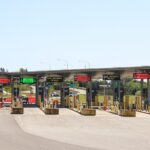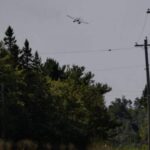As wildfires rage with increasing frequency and intensity across Canadian provinces, homeowners face a sobering reality: understanding precisely what their insurance policies cover has never been more crucial. The devastating scenes from Fort McMurray in 2016 to the record-breaking fires of 2023 serve as stark reminders that preparation extends beyond evacuation plans to financial protection.
“Most Canadians assume their standard home insurance covers all natural disasters, but the fine print tells a different story,” says Michelle Davison, senior risk analyst at the Canadian Insurance Bureau. “Wildfire coverage specifically has nuances that can leave homeowners vulnerable if they haven’t reviewed their policies carefully.”
Standard home insurance policies in Canada typically cover fire damage, including wildfires, as part of their basic protection. This generally includes the structure of your home, attached structures like garages, personal belongings, and additional living expenses if you’re displaced. However, insurance experts at CO24 News warn that coverage limits and exclusions vary significantly between providers.
Rob Wesseling, president and CEO of Co-operators, notes that “unlike floods or earthquakes, which often require separate policies, wildfire damage is generally included in comprehensive home insurance. But homeowners shouldn’t take this for granted—policies differ in terms of coverage limits and evacuation expense allowances.”
A critical aspect of wildfire coverage that many homeowners overlook is Additional Living Expenses (ALE). This provision covers costs when mandatory evacuation orders force residents from their homes—even if no physical damage occurs to the property. These expenses typically include temporary accommodation, meals, and essential items.
“We’re seeing more claims related to evacuation expenses as wildfires affect larger populations,” explains Jennifer Drake, claims director at Aviva Canada. “Most policies cover these expenses for a limited time period—usually two to four weeks—though coverage can be extended in catastrophic situations.”
For homeowners in high-risk areas, particularly those in what insurers call the “wildland-urban interface” where development meets forests, insurance options may be more limited or expensive. Our CO24 Business analysis shows premium increases of 15-30% in these regions over the past three years alone.
The Insurance Bureau of Canada News recommends several steps for homeowners to protect themselves financially:
1. Review your policy annually, particularly coverage limits for structure, contents, and ALE provisions
2. Document your belongings through video or photographs stored in cloud storage
3. Consider additional coverage if you live in a high-risk area
4. Implement FireSmart recommendations to potentially qualify for premium discounts
5. Understand exactly what evacuation expenses will be covered and for how long
Climate scientists tracking World News climate patterns predict that Canadian wildfire seasons will continue to intensify in coming decades. Dr. Sarah Thompson of the Climate Resilience Institute notes that “what we considered once-in-a-generation events are becoming increasingly common, making insurance preparation as important as physical preparation.”
For those rebuilding after wildfire losses, challenges can extend beyond insurance. Supply chain issues and construction labor shortages have extended rebuilding timelines in affected communities, sometimes beyond the period covered by ALE provisions. This gap has prompted some insurers to offer extended ALE riders for additional premiums.
Provincial governments across Canada have responded differently to growing wildfire risks. British Columbia has implemented new building codes for wildfire-prone areas, while Alberta has expanded FireSmart programs to reduce community vulnerability. These measures may eventually influence insurance availability and pricing, according to CO24 Politics analysis of provincial policy developments.
As climate change continues to reshape our understanding of property risk, the question remains: are Canadian homeowners adequately preparing for the financial implications of increasingly common natural disasters, or will it take more devastating losses before insurance literacy becomes as routine as checking the weather forecast?
























